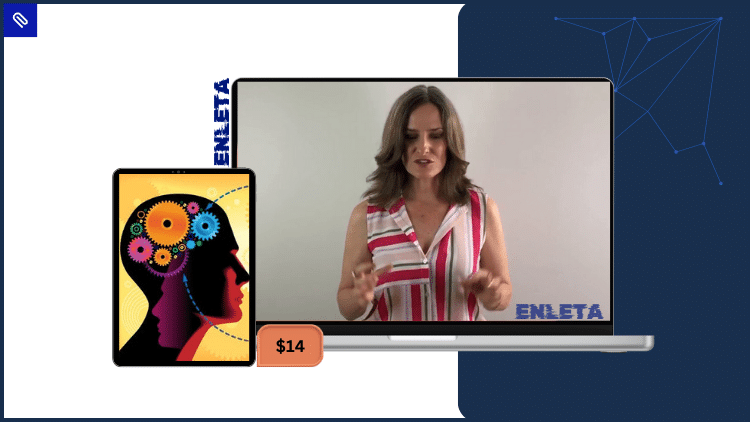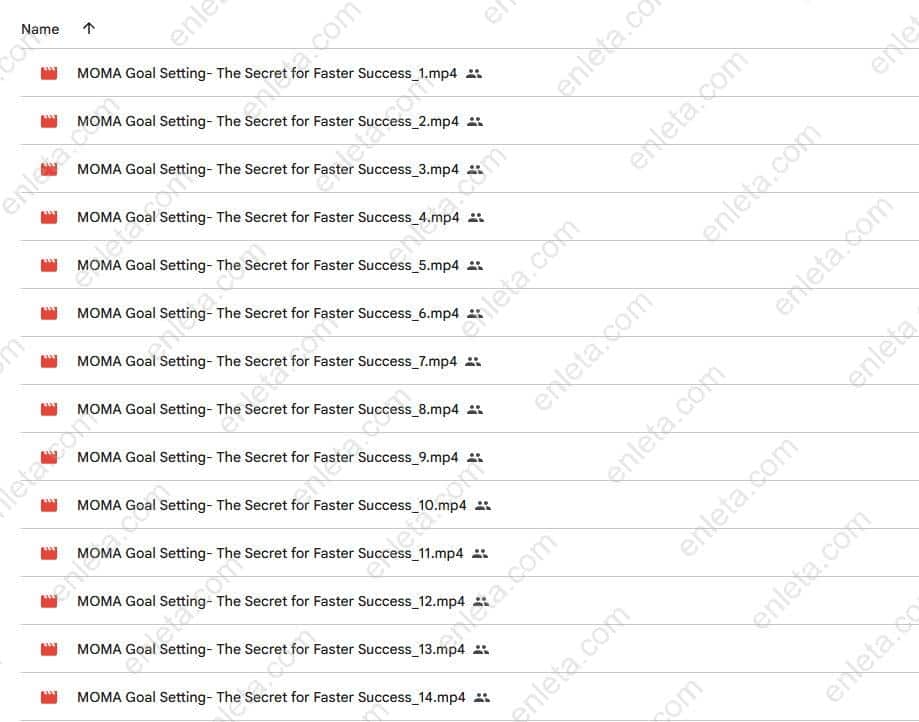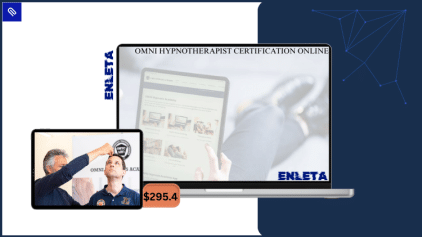MOMA Goal Setting – The Secret for Faster Success by Jill McAbe – Instant Download!
MoMA Goal Setting: The Secret for Faster Success is a focused, method-driven training built around the MOMA framework—short for Motivating Outcomes that are Measurable with Appointments (for review). Instead of flooding you with vague inspiration, the course teaches you how to write goals that pull you forward (motivation), define their evidence (measurement), and lock in review appointments so momentum compounds. Public write-ups of the method describe MOMA as a “new” twist on classic goal systems that adds cadence and accountability to keep you out of the set-and-forget trap.
MOMA Goal Setting – The Secret for Faster Success Free Download – Includes Verified Content:
MOMA Goal Setting – The Secret for Faster Success – Free Download Video Sample:
MOMA Goal Setting – The Secret for Faster Success – Overview this course
Across modules, you translate ambitions into operational plans: pick one meaningful outcome, specify the behaviors that move the needle, assign a metric that proves progress, and schedule recurring reviews to adjust or escalate. Third-party product pages highlight the course as a complete package (video lessons plus supporting downloads), often positioned for learners who want to accomplish more by refining their goal-setting method rather than consuming motivational content.
Why should you choose this course?
1) It operationalizes motivation.
Most systems treat motivation as a feeling. MOMA treats it as structure: you craft motivating outcomes tied to values and identity, then bind them to a review calendar. By combining meaning (why this matters) with appointments (when you’ll re-engage), you reduce dependence on willpower and increase return visits to the work. External descriptions of MOMA stress its cadence—appointments for review are built in, not optional.
2) It upgrades “measurable.”
SMART goals ask for “measurable,” but MOMA pushes further: you define the evidence chain that proves progress, from daily behaviors (leading indicators) to weekly milestones and final outcomes (lagging indicators). That clarity prevents the classic problem of feeling busy yet moving nowhere.
3) It’s review-centric, not result-myopic.
Because appointments for review are embedded at the goal level, you stop winging it and start running a closed-loop system—plan → act → review → adjust. Merchant pages for the course emphasize that learners start accomplishing more by refining their goal-setting method, i.e., by installing a process that keeps priorities visible.
4) It layers smoothly on top of your tools.
MOMA is platform-agnostic. Whether you live in Google Calendar, Notion, Apple Reminders, or pen-and-paper, the structure is the same: name the outcome, specify the metric, and schedule the review windows.
5) It’s time-efficient.
If you’re too busy to read a bookshelf of productivity titles, this course compresses the principles into a do-this-today playbook. Third-party listings show a succinct, outcomes-first curriculum with lifetime access in some catalogs, so you can revisit during new quarters or roles.
What You’ll Learn
1) The MOMA architecture
-
Motivating Outcomes: craft goal statements that tie directly to values and identity, so commitment survives hard weeks.
-
Measurable: pick clear finish lines and the daily/weekly metrics that predict them.
-
Appointments: build the review cadence into the goal (e.g., Mon 7:30, Fri 4:30), so progress checks are non-negotiable. (This acronym and emphasis are documented in press/blog coverage of the method.)
2) Outcome design vs. task hoarding
Learn to convert a noisy to-do list into one metric that matters per goal, with 3–5 supporting behaviors. You’ll write an “evidence brief” for each outcome: scope, constraints, risks, and proof.
3) Metrics that move: leading & lagging indicators
Map leading indicators (practice minutes, outreach count, deep-work hours) to lagging indicators (benchmarks, revenue, weight lost). You’ll build a mini-dashboard to see if effort is compounding.
4) Review rituals
Install weekly and monthly review appointments: close loops, examine deviations, and revise behaviors. This “appointments for review” concept is the superpower that makes MOMA stick across quarters.
5) Friction management & habit scaffolding
Design environmental supports (checklists, defaults, time boxes) that reduce activation energy. Use “if-then” scripts for common blockers—travel weeks, late nights, context switching.
6) Priority conflicts & constraints
Apply guardrails (e.g., max meetings per day, non-negotiable focus block, budget caps) so goals don’t cannibalize each other. Learn to de-scope without derailing the quarter.
7) Estimate, instrument, iterate
Use appointments to re-estimate timelines, sharpen metrics, or rewrite outcomes when reality diverges. Because review is formalized, iteration becomes identity, not a sign of failure.
8) Multi-domain execution
Translate MOMA to health, career, learning, finance, and relationships—one method, different contexts.
Who Should Take This Course?
Busy professionals and managers who juggle competing priorities and need a review-driven system to keep strategic work moving between meetings.
Entrepreneurs and creators who must convert ideas into shipping cadence—campaigns, launches, or product sprints—with minimal overhead.
Students and career switchers who want a portable framework to survive changing schedules and still hit meaningful milestones.
Team leads and coaches who need a common language for goals—a method that travels well between 1:1s and team rituals, aligning individual outcomes with team KPIs.
Anyone burned by New Year’s resolutions who wants a method that bakes appointments and measurement into every goal so motivation is supported by structure, not left to chance.
Practical applications you can implement this week
-
Write one MOMA goal for your most important outcome this quarter. Example: “Publish 12 newsletter issues that generate ≥ 10% CTR; weekly review Mondays 8:00.”
-
Build an evidence chain: choose 2–3 leading indicators (focus hours, drafts completed, outreach).
-
Schedule two standing appointments for review in your calendar (Mon plan, Fri retro).
-
Install guardrails: a 90-minute daily focus block and a maximum number of meetings per day.
-
Create a one-page scoreboard (sheet or whiteboard) you update at each appointment; avoid dashboards you won’t open.
-
Prepare “if-then” scripts for interruptions: “If travel day, run 30-minute micro-review at 7 pm.”
-
Run a 14-day pilot and rewrite the goal once with insights from two reviews—embrace iteration as part of the method.
How this course supports “natural flow” and SEO-friendly execution
Search engines reward content—and products—that demonstrate clarity, topical depth, and user intent satisfaction. MOMA aligns with those principles:
-
Clarity: one outcome per goal with explicit metrics.
-
Depth: the entire journey from definition to review is instrumented.
-
Satisfaction: appointments translate into visible progress and course correction, reducing bounce between priorities.
By designing your personal execution around reviewable outcomes and measurable evidence, you cultivate a natural flow of progress: small wins stacked predictably, week after week.
Comparison notes (context)
Online write-ups describe the MOMA framework explicitly—Motivating Outcomes that are Measurable with Appointments—as an answer to the limitations of generic goal advice. The “appointments” element is the standout: it shifts accountability from memory to the calendar and explains why practitioners report faster follow-through once cadence is enforced.
Third-party product pages selling MoMA Goal Setting – The Secret for Faster Success present it as a complete, downloadable course package—reinforcing that you’re buying a method you can run (not just mindset pep talks). These listings consistently market the course to people who want to achieve more by refining how they set goals, with lifetime access noted in some stores.
Conclusion
Complex lives need simple systems that you’ll actually use. MoMA Goal Setting: The Secret for Faster Success delivers that by turning goals into motivating outcomes with measurable evidence and appointments that force a return to the work. You’ll learn to design outcomes that matter, pick leading indicators that predict success, and install review rituals that convert effort into results—across career, health, learning, and relationships. The emphasis on cadence and accountability closes the loop that most goal frameworks leave open, making progress visible and course corrections routine. If you’re ready to replace vague ambitions with a calendar-anchored operating system, MoMA Goal Setting: The Secret for Faster Success offers a precise, repeatable way to get there.
👍Make success a schedule, not a slogan—enroll in MoMA Goal Setting: The Secret for Faster Success and turn motivating outcomes into weekly, measurable wins.











Reviews
There are no reviews yet.